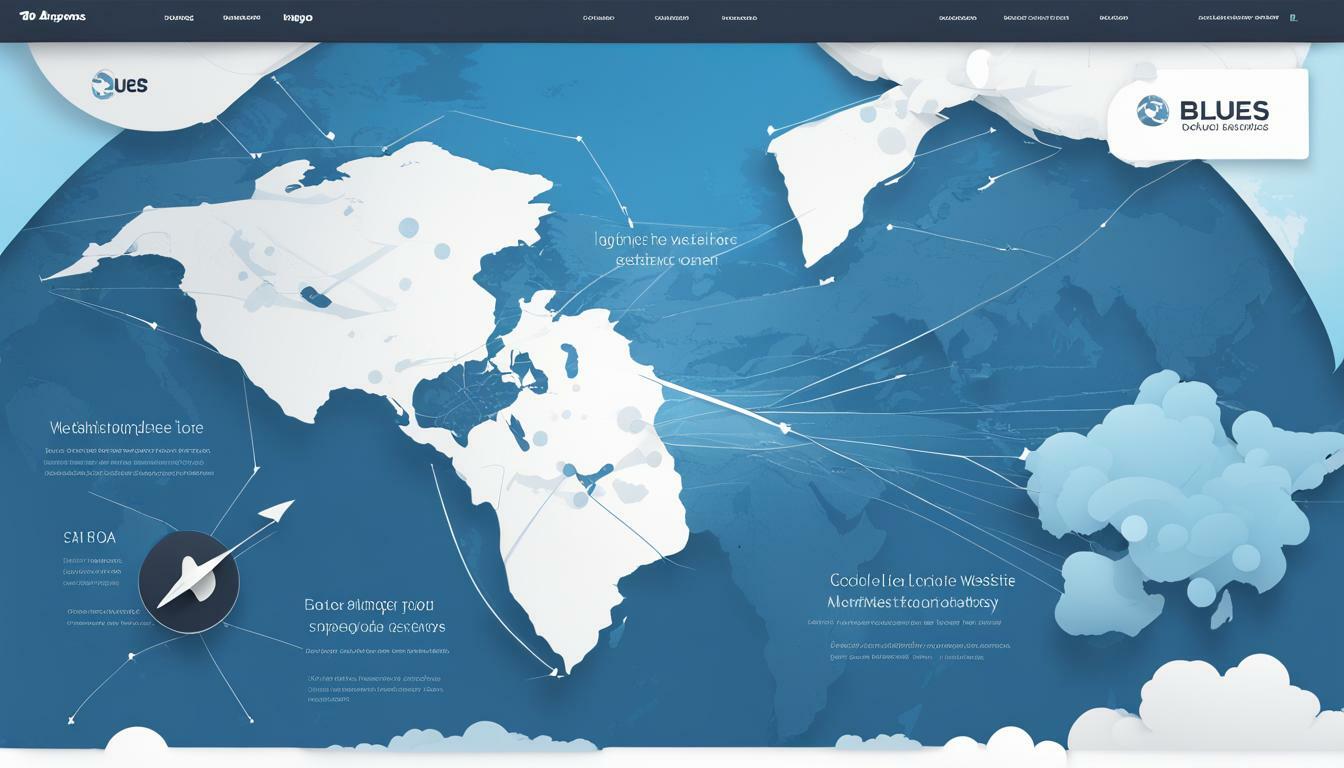
As websites become more complex and multimedia-rich, the need for fast and reliable content delivery has never been more important. Enter Azure Content Delivery Network (CDN), a powerful tool that can help businesses speed up their websites, improve user experience, and increase engagement.
Azure CDN is a globally distributed network of servers that cache website content and deliver it to users from the server closest to them. This significantly reduces latency, improves performance, and ensures that content is delivered quickly and efficiently.
Key Takeaways:
- Azure Content Delivery Network (CDN) is a powerful tool that improves website speed and user experience
- Azure CDN is a globally distributed network of servers that caches website content and delivers it to users from the server closest to them
- Azure CDN offers a number of services that boost performance, reduce latency, and improve scalability
Boost Performance with Azure CDN Services
Azure Content Delivery Network (CDN) services are designed to improve website performance by optimizing content delivery. Azure CDN network boasts a variety of services, including edge servers, caching, and load balancing. These services work together to enhance the efficiency of content delivery, resulting in improved website speed and user experience.
The Azure CDN network provides edge servers, which help to reduce the distance between the user and the content. By hosting the content on edge servers located closer to the user, latency is reduced, and content is delivered faster. Additionally, edge servers help to distribute traffic and reduce the load on origin servers, improving website performance and reliability.
Another significant feature of Azure CDN services is caching, which helps reduce the time it takes to deliver content. Caching works by storing frequently accessed content on edge servers, reducing the need to fetch content from the origin server each time it is requested. This feature, along with other optimizations such as image compression and minification, helps to further improve website speed and performance.
Load balancing is another critical service provided by the Azure CDN network. This feature distributes traffic across multiple servers, improving responsiveness and reliability. Azure CDN offers multiple load-balancing options, including round-robin, performance, and geographic-based methods. This flexibility allows businesses to choose the best option for their specific needs.
Boost Performance with Azure CDN Services:
| Azure CDN Services | Benefits |
|---|---|
| Edge servers | Reduces latency and improves reliability |
| Caching | Reduces content delivery time through storing frequently accessed content |
| Load balancing | Distributes traffic and improves responsiveness |
Azure CDN services offer businesses a multitude of options to improve website performance. By leveraging edge servers, caching, and load balancing, businesses can optimize content delivery, improve website speed, and enhance user experience. The Azure CDN network is designed to be flexible and scalable, allowing businesses to choose the best options for their specific needs.
Azure CDN Features for Reduced Latency
Microsoft Azure CDN comes with a wealth of features and capabilities that contribute to reduced latency and improved user experience. Here are some of the key features of Azure CDN:
HTTP/2 Support
Azure CDN supports HTTP/2, a newer and faster version of HTTP that allows for faster content delivery over the web. HTTP/2 reduces the amount of time it takes to load web pages by minimizing the number of connections required to fetch resources. With HTTP/2 support, Azure CDN can help reduce page load times for modern web applications.
SSL Termination
Azure CDN supports SSL termination, which means that SSL encryption and decryption occurs at the CDN edge servers rather than on the website server. This can reduce the load on the website server and improve the speed of content delivery. With SSL termination, Azure CDN can help reduce the time it takes to establish secure connections and deliver content over HTTPS.
Dynamic Site Acceleration
Azure CDN also supports dynamic site acceleration, which is a technique that uses advanced caching and network optimization techniques to accelerate the delivery of dynamic content. This is particularly useful for web applications that generate content on the fly, such as e-commerce sites or social media platforms. With dynamic site acceleration, Azure CDN can help reduce the latency of dynamic content and improve the overall performance of web applications.
With these and other features, Microsoft Azure CDN can help businesses deliver content quickly and improve user experience. By taking advantage of Azure CDN’s capabilities, businesses can reduce latency, improve performance, and scale their content delivery as needed.
Scale with Ease using Azure CDN
Azure CDN is not only faster and more efficient than traditional content delivery methods, but it’s also significantly more cost-effective. With flexible pricing models that allow businesses to pay only for the traffic they consume, scaling with Azure CDN is simple and straightforward.
| CDN Pricing Model | Usage-Based | Monthly Commitment |
|---|---|---|
| North America & Europe | $0.087/GB | $0.05/GB |
| Asia & Other Regions | $0.138/GB | $0.08/GB |
When businesses leverage Azure CDN, they can easily handle high traffic volumes and accommodate sudden bursts of activity without worrying about the costs associated with traditional content delivery methods. Azure CDN also provides the ability to scale globally, ensuring that businesses can reach audiences all over the world with ease.
With Azure CDN, businesses can enjoy the benefits of faster website speeds, reduced latency, and improved user experience, all while keeping costs low and scaling with ease.
Leveraging Azure CDN for Content Delivery
Businesses can effectively leverage CDN services in Azure to improve website performance and enhance user experience. Here are some best practices and techniques for optimizing content delivery:
- Use caching: Azure CDN provides caching services that can help improve website performance by reducing the time it takes to load content. You can configure caching options for static and dynamic content to minimize response times.
- Optimize images: Images are often the largest files on a website and can significantly impact load times. Use compression techniques and optimize image sizes to minimize the amount of data that needs to be transferred.
- Integrate with other Azure services: Azure CDN integrates with other Azure services like Azure Storage and Azure Web Apps, allowing you to easily distribute content and scale resources as needed.
- Use a CDN network: Azure CDN provides a global network of edge servers that help distribute content closer to end-users, reducing latency and improving website performance.
- Monitor and optimize performance: Use tools like Azure Monitor to keep an eye on website performance and identify areas that can be further optimized. Use metrics like response time, data transfer, and cache hit ratio to fine-tune content delivery.
By implementing these best practices and leveraging the scalability of Azure CDN, businesses can ensure that their websites are fast, reliable, and responsive.
Conclusion
Azure Content Delivery Network (CDN) is a powerful solution for improving website speed and user experience. By leveraging the various services, features, and scalability options offered by Azure CDN, businesses can optimize content delivery and reduce latency.
In conclusion, Azure CDN is an essential tool for any website that values performance and usability. It provides a cost-effective and flexible solution for handling high traffic volumes, accommodating sudden bursts of activity, and delivering content quickly.
If you have not yet explored Azure CDN, we encourage you to do so and discover its benefits for your own website. With Azure CDN, you can maximize speed, boost performance, and reduce latency, ultimately providing a better user experience for your audience.
FAQ
Q: What is Azure Content Delivery Network (CDN)?
A: Azure Content Delivery Network (CDN) is a service provided by Microsoft Azure that helps improve website speed and performance by delivering content quickly to users around the world.
Q: How does Azure CDN boost website performance?
A: Azure CDN offers various services, such as edge servers, caching, and load balancing, which help optimize content delivery and boost website performance.
Q: What features of Azure CDN help reduce latency?
A: Azure CDN supports features like HTTP/2, SSL termination, and dynamic site acceleration, which help reduce latency and deliver content quickly to users.
Q: How does Azure CDN enable scalability?
A: Azure CDN can handle high traffic volumes and accommodate sudden bursts of activity, making it easy to scale websites and ensure optimal performance.
Q: How can businesses leverage Azure CDN for content delivery?
A: Businesses can effectively leverage Azure CDN by following best practices, optimizing performance, and integrating it with other Azure services. Real-world examples showcase successful implementations.








